Most Cited
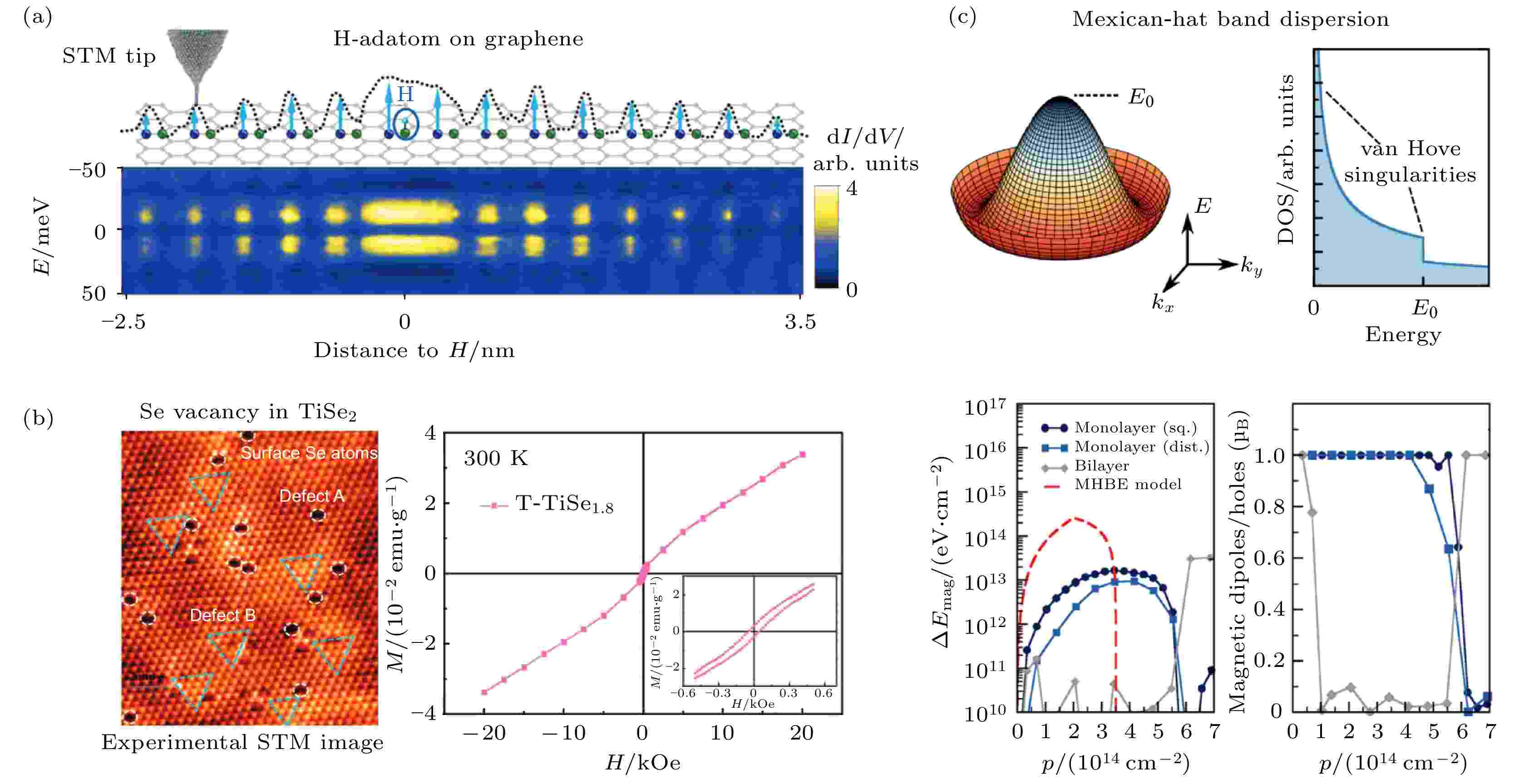
2022, 71 (12): 127504.
doi: 10.7498/aps.71.20220301
Abstract +
Two-dimensional (2D) magnetic materials with magnetic anisotropy can form magnetic order at finite temperature and monolayer limit. Their macroscopic magnetism is closely related to the number of layers and stacking forms, and their magnetic exchange coupling can be regulated by a variety of external fields. These novel properties endow 2D magnetic materials with rich physical connotation and potential application value, thus having attracted extensive attention. In this paper, the recent advances in the experiments and theoretical calculations of 2D magnets are reviewed. Firstly, the common magnetic exchange mechanisms in several 2D magnetic materials are introduced. Then, the geometric and electronic structures of some 2D magnets and their magnetic coupling mechanisms are introduced in detail according to their components. Furthermore, we discuss how to regulate the electronic structure and magnetism of 2D magnets by external (field modulation and interfacial effect) and internal (stacking and defect) methods. Then we discuss the potential applications of these materials in spintronics devices and magnetic storage. Finally, the encountered difficulties and challenges of 2D magnetic materials and the possible research directions in the future are summarized and prospected.
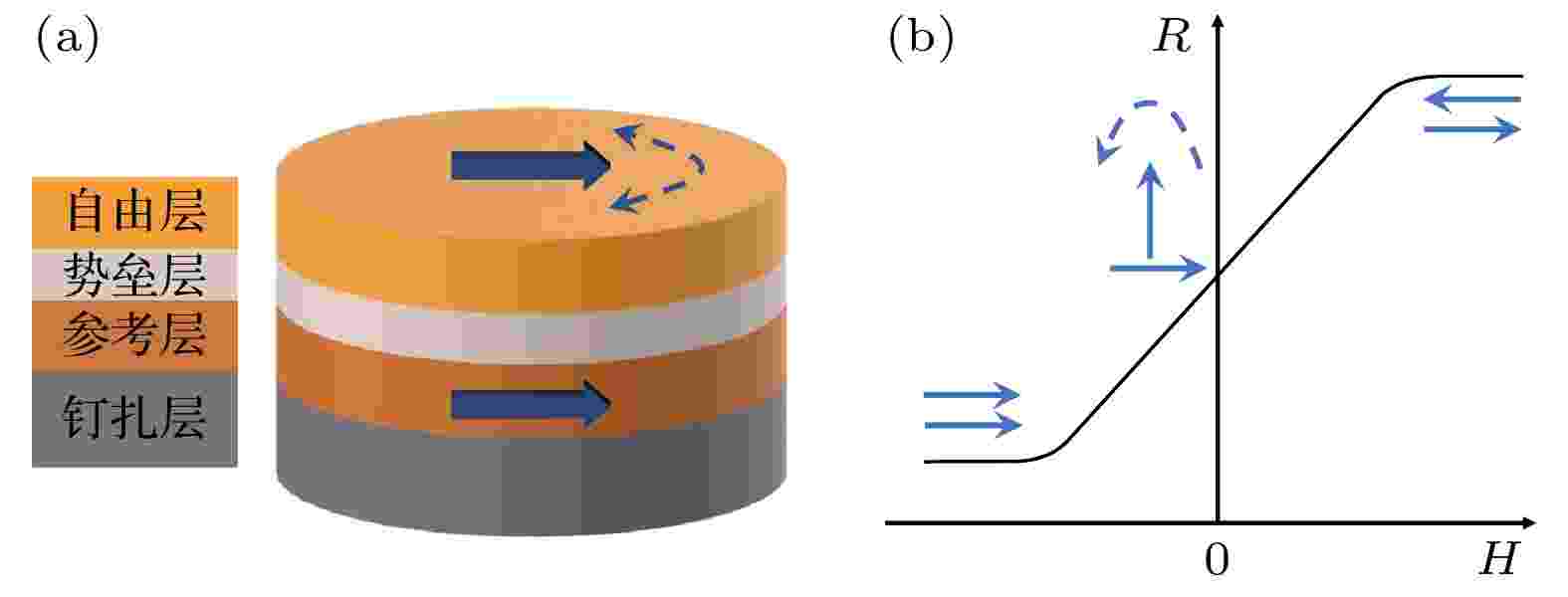
2022, 71 (5): 058504.
doi: 10.7498/aps.71.20211883
Abstract +
Sensors play an important role in Internet of Things (IoT) industry and account for a rapidly growing market share. Among them, the magnetic sensor based on tunneling magnetoresistance (TMR) effect possesses great potential applications in the fields of biomedical, navigation, positioning, current detection, and non-destructive testing due to its extremely high sensitivity, small device size and low power consumption. In this paper, we focus on the development of TMR sensor technology routes, covering a series of research advances from a sensor transducer to three-dimensional magnetic field detection, and then to the applications. Firstly, we recall the development history of TMR sensors, explain its working principle, and discuss the method to improve the output linearity of single magnetic tunnel junction. Next, we state the Wheatstone-bridge structure, which can inhibit temperature drift in detail and review several methods of fabricating the full bridge of TMR sensors. Furthermore, for the market demand of three-dimensional magnetic field detection, we summarize the methods of designing and fabricating three-dimensional sensing structure of the TMR sensor. At the same time, we list several optimization schemes of TMR sensor performance in terms of sensitivity and noise level. Finally, we discuss two types of emerging applications of TMR sensors in recent years. The TMR sensors can also be used in intelligence healthcare due to their ultra-high sensitivity. In addition, devices from the combination of spin materials and MEMS structure have attracted wide attention, especially, because of the large commercial market of microphones, spin-MEMS microphones utilized TMR techniques will be the next research hotspot in this interdisciplinary field.
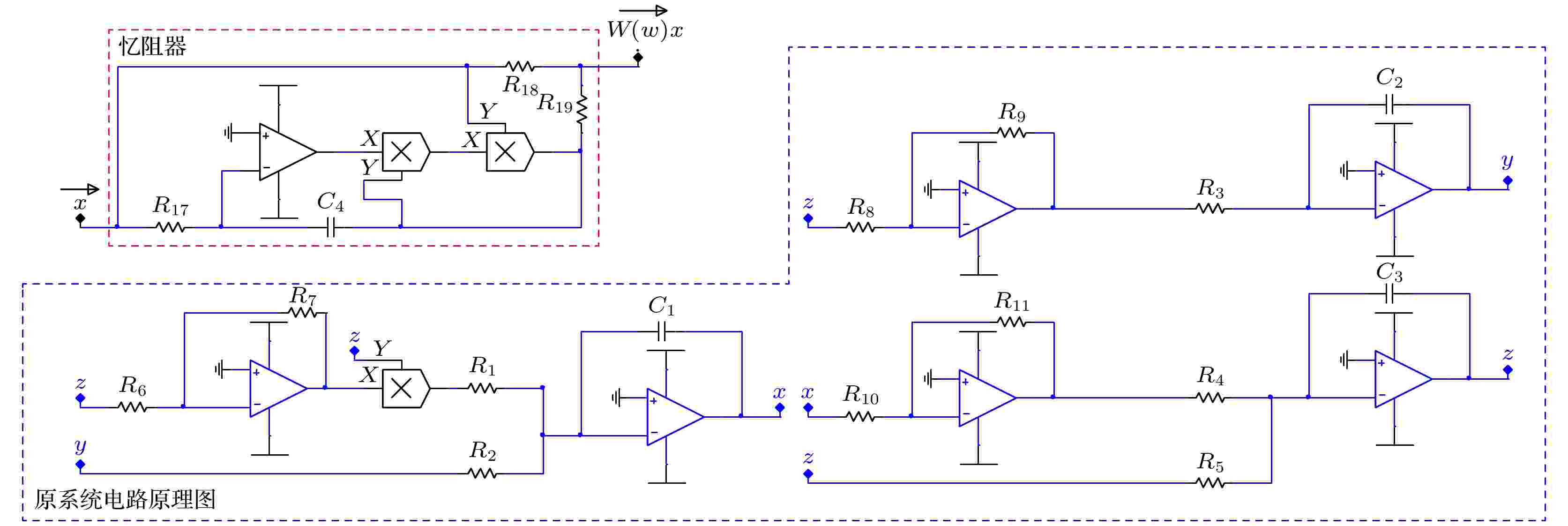
2022, 71 (16): 160502.
doi: 10.7498/aps.71.20220593
Abstract +
Using memristors to construct special chaotic systems is highly interesting and meaningful. A simple four-dimensional memristive chaotic system with an infinite number of coexisting attractors is proposed in this paper, which has a relatively simple form but demonstrates complex dynamical behavior. Here, we use digital simulations to further investigate the system and utilize the bifurcation diagrams to describe the evolution of the dynamical behavior of the system with the influence of parameters. We find that the system can generate an abundance of chaotic and periodic attractors under different parameters. The amplitudes of the oscillations of the state variables of the system are closely dependent on the initial values. In addition, the experimental results of the circuit are consistent with the digital simulations, proving the existence and feasibility of this memristive chaotic system.
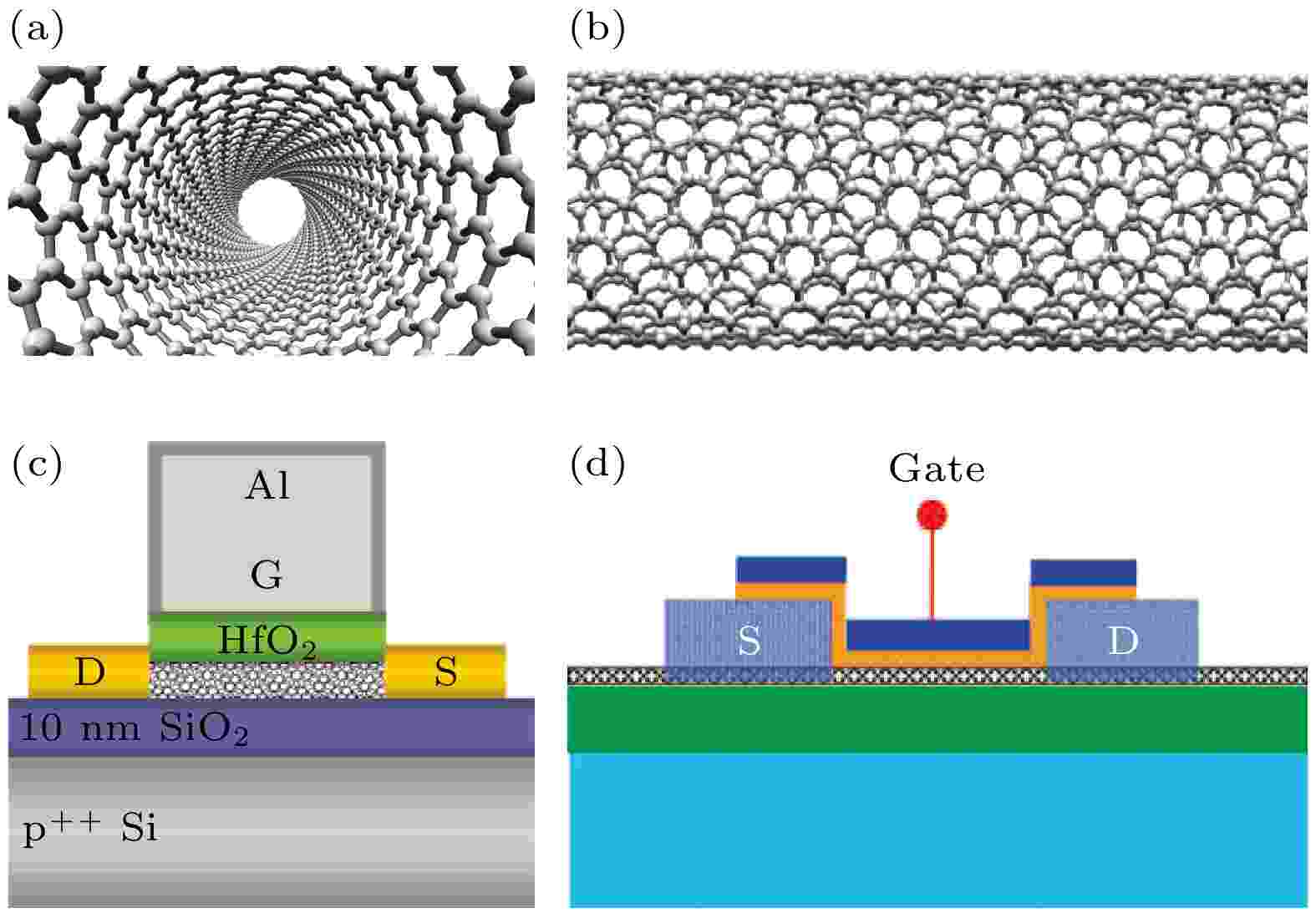
2022, 71 (6): 068503.
doi: 10.7498/aps.71.20212076
Abstract +
In the past 60 years, silicon-based semiconductor technology has triggered off the profound change of our information society, but it is also gradually approaching to the physical limit and engineering limit as well. Thus, the global semiconductor industry has entered into the post-Moore era. Carbon nanotube has many excellent electronic properties such as high mobility and ultra-thin body, so it has become a hopeful candidate for the new semiconductor material in the post-Moore era. After more than 20 years of development, carbon based electronic technology has made fundamental breakthroughs in many basic problems such as material preparation, Ohmic metal-semiconductor contact and gate engineering. In principle, there is no insurmountable obstacle in its industrialization process now. Therefore, in this paper the intrinsic advantages of carbon based electronic technology in the post-Moore era is introduced, the basic problems, progress and optimization direction of carbon based electronic technology are summarized, the application prospects in the fields of digital circuits, radio frequency electronics, sensing and detection, three-dimensional integration and chips for special applications are presented. Finally, the comprehensive challenges to the industrialization of carbon based electronic technology are analyzed, and its future development is also prospected.

2022, 71 (11): 110701.
doi: 10.7498/aps.71.20220099
Abstract +
When capturing images under low-light lighting conditions, the resulting images often suffer low visibility. Such low-visibility images not only affect the visual effect but also cause many difficulties in practical application. Therefore, image enhancement technology under low-light conditions has always been a challenging problem in image algorithms. Considering that most of the existing image enhancement methods are based on the RGB color space enhancement technology, the correlation among the RGB three primary colors is ignored, which makes the color distortion phenomenon easy to occur when the image is enhanced. To solve the problems of poor image visibility and color deviation under low-light conditions, in this paper an advanced Retinex network enhancement method is proposed. In the method, firstly the low-light RGB image is transformed into HSV color space, the Retinex decomposition network is used to decompose and enhance the value component separately, and thus increasing the resolution of the value component through up-sampling operation; then, for the hue component and saturation component, the nearest neighbor interpolation is used to increase their resolutions, and the enhanced value component is combined to convert back to RGB color space to obtain the initial enhanced image; finally, the wavelet transform image fusion technology is used to fuse with the original low-light image to eliminate the over-enhanced part in the initial enhanced image. The analysis of experimental results shows that the method proposed in this paper has obvious advantages in brightness enhancement and color restoration of low-light images. Especially, comparing with the original Retinex network method, the NIQE value decreases by an average of 19.49%, and the image standard deviation increases by an average of 41.35%. The algorithm proposed in this paper is expected to be effectively used in the fields of security monitoring and biomedicine.
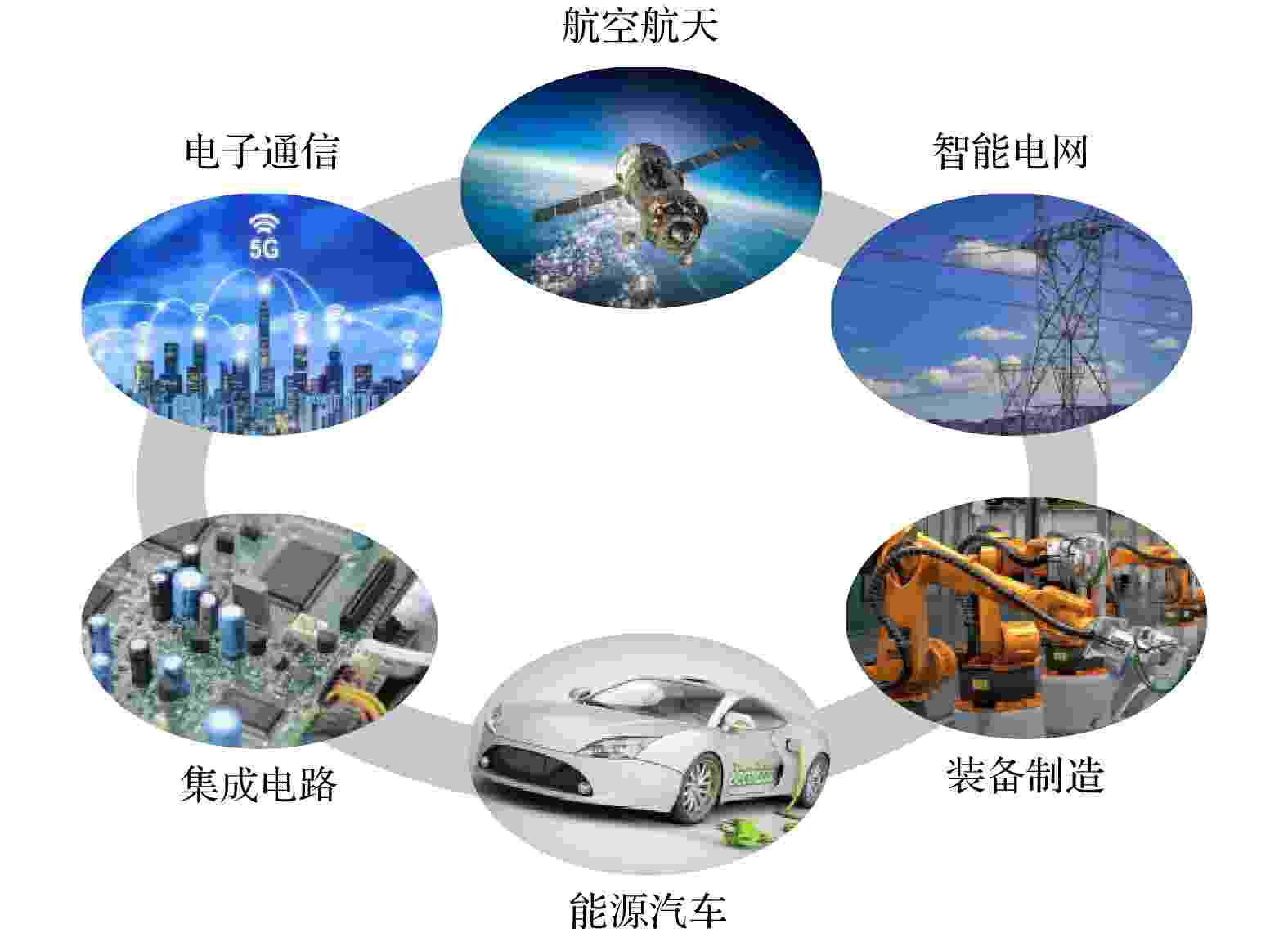
2022, 71 (23): 233601.
doi: 10.7498/aps.71.20221398
Abstract +
In the era of highly thin, multi-functional and integrated electronic devices, it will inevitably lead to the heat accumulation inside the composite material, thereby seriously affecting the operation stability and service life of the equipment. How to realize the rapid and efficient heat conduction and heat dissipation of dielectric materials has become a bottleneck problem restricting the further development of electronic devices. The intrinsic thermal conductivity of traditional polyimide is low, which limits its application in electrical equipment, smart grid and other fields. The development of new high thermal conductivity polyimide dielectric film materials has become the focus of research. This paper introduces the thermal conduction mechanism of composite materials, summarizes the research progress and development status of thermally conductive polyimide films in recent years, and focuses on the effects of thermally conductive fillers, interface compatibility, and molding process of the thermal conductivity of materials. Finally, some key scientific and technical issues in the research are summarized and prospected in combination with the future development needs of thermally conductive polyimide composite dielectric materials.
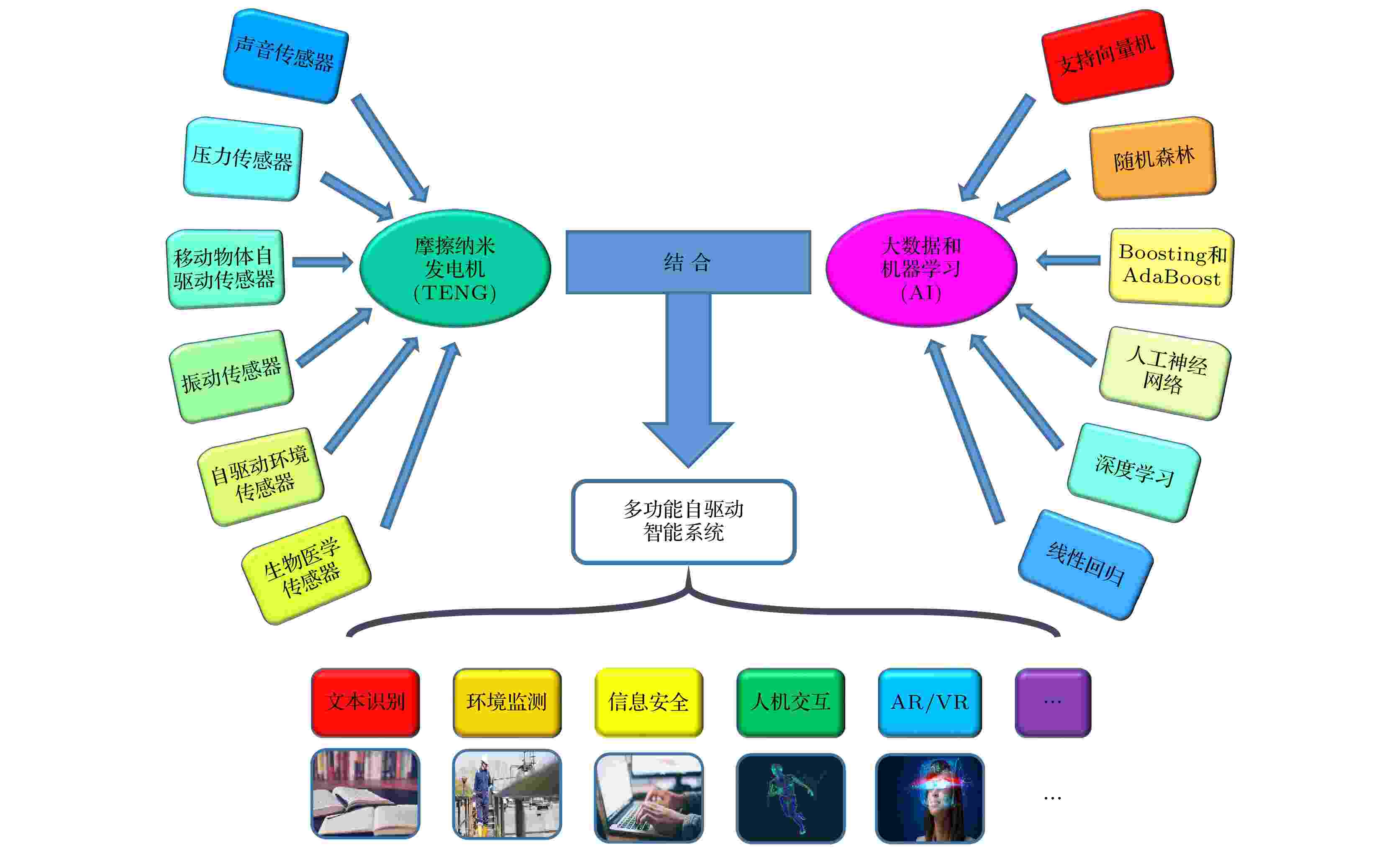
2022, 71 (7): 078702.
doi: 10.7498/aps.71.20211632
Abstract +
In the era of The Internet of Things, how to develop a smart sensor system with sustainable power supply, easy deployment and flexible use has become an urgent problem to be solved. Triboelectric nanogenerator (TENG) driven by Maxwell’s Displacement Current can convert mechanical motion into electrical signals, thus it can be used as a self-powered sensor. Sensors based on TENGs have the advantages of simple structure and high instantaneous power density, which provide an important means to build intelligent sensor systems. Meanwhile, machine learning, as a technique with low cost, short development cycle, and strong data processing capabilities and predictive capabilities, is effective in processing the large amount of electrical signals generated by TENG. This article combines the latest research progress of TENG-based sensor systems for signal processing and intelligent recognition by employing machine learning techniques, and outlines the technical features and research status of this research direction from the perspectives of traffic safety, environmental monitor, information security, human-computer interaction and health motion detection. Finally, this article also in-depth discusses the current challenges and future development trends in this field, and analyzes how to improve in the future to open up a broader application space. It is suggested that the integration of machine learning technology and TENG-based sensors will promote the rapid development of intelligent sensor networks in the future.
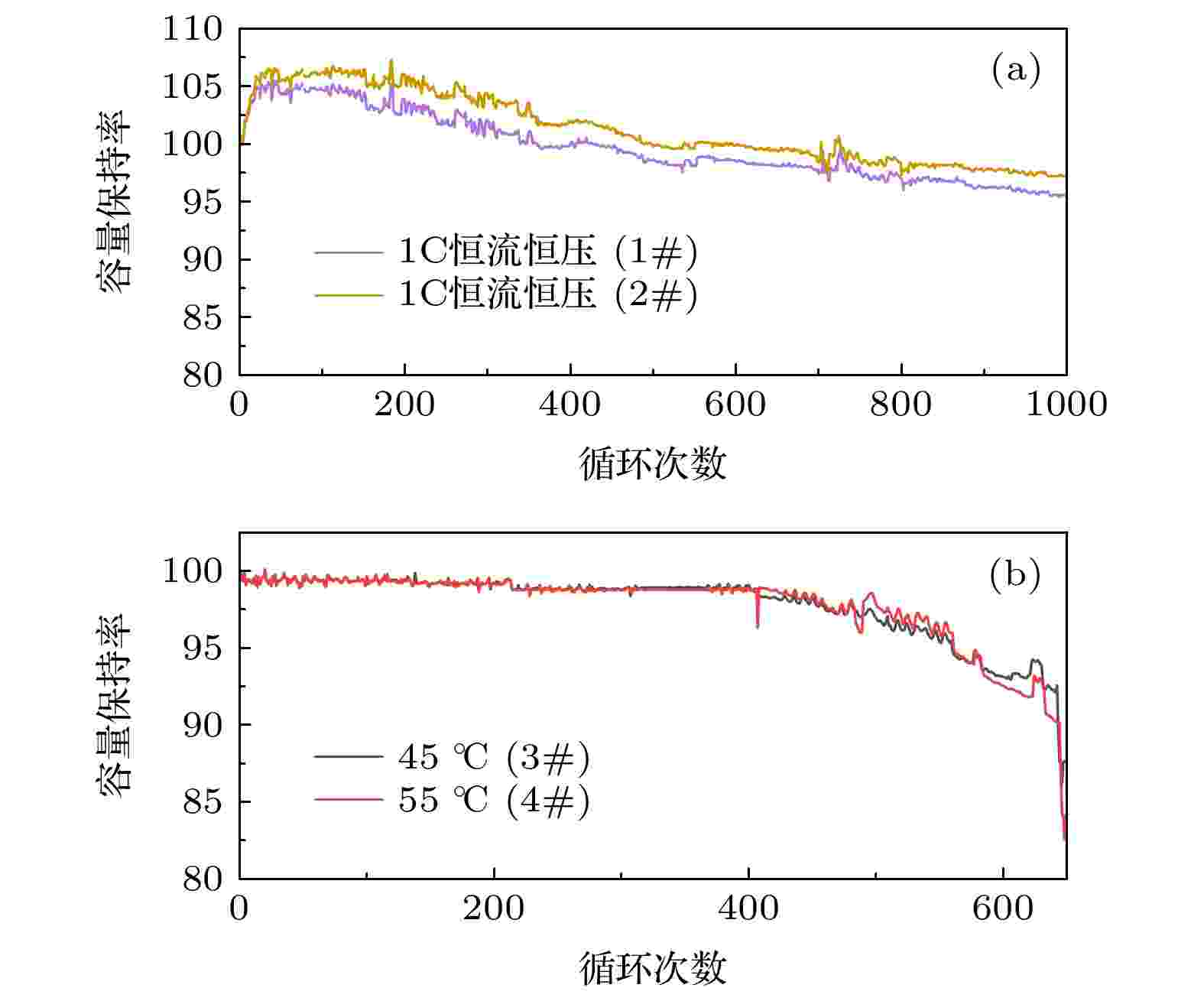
2022, 71 (3): 038803.
doi: 10.7498/aps.71.20211401
Abstract +
The current electrochemical models of lithium-ion power batteries have many problems, such as complex models, difficult modeling, low computational efficiency and poor aging evaluation effect. In this paper, a mechanism model (ADME) considering battery decay and aging is proposed. In this paper, the pseudo-two-dimensions (P2D) electrochemical model is first reduced by finite difference method to obtain a simplified P2D (SP2D). On the basis of SP2D model, a mechanism model considering battery decay and aging is proposed, which is based on the degradation and aging phenomenon caused by the side reactions between positive and negative electrodes. Secondly, the multivariate deviation compensation least square method is used to identify the model parameters. Finally, the terminal voltage output of SP2D model is compared with that of ADME model and the outputs from the two models are also analyzed through the cycle experiment on power battery aging performance, constant current and pulse condition. The results show that the ADME model is relatively simple, has high computational efficiency and estimation accuracy, and can effectively evaluate the aging decline of battery capacity, and obtain the ideal external characteristic curve of lithium ion power battery.
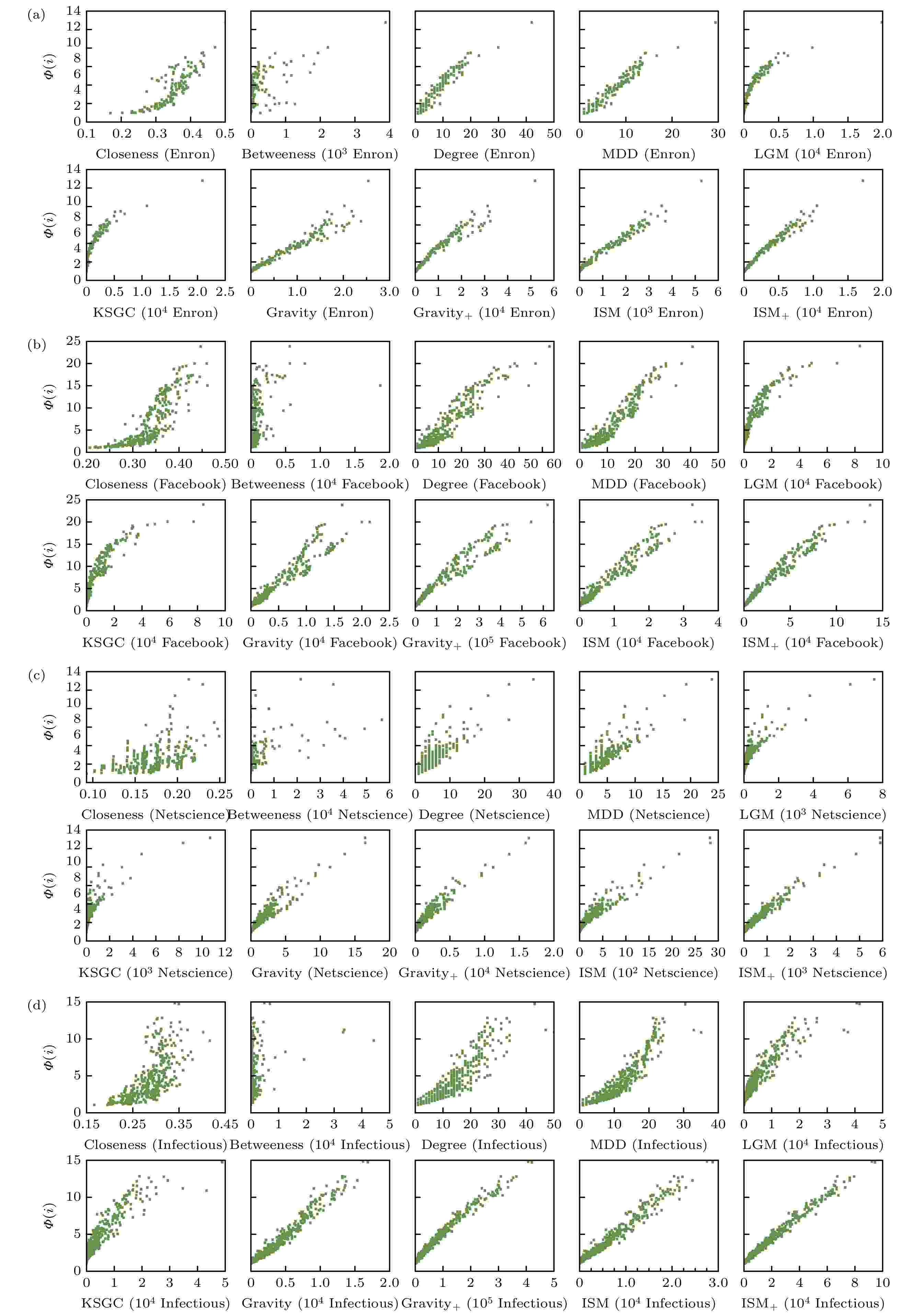
2022, 71 (17): 176401.
doi: 10.7498/aps.71.20220565
Abstract +
How to use quantitative analysis methods to identify which nodes are the most important in complex network, or to evaluate the importance of a node relative to one or more other nodes, is one of the hot issues in network science research. Now, a variety of effective models have been proposed to identify important nodes in complex network. Among them, the gravity model regards the coreness of nodes as the mass of object, the shortest distance between nodes as the distance between objects, and comprehensively considers the local information of nodes and path information to identify influential nodes. However, only the coreness is used to represente the quality of the object, and the factors considered are relatively simple. At the same time, some studies have shown that the network can easily identify the core-like group nodes with locally and highly clustering characteristics as core nodes when performing k-core decomposition, which leads to the inaccuracy of the gravity algorithm. Based on the universal gravitation method, considering the node H index, the number of node cores and the location of node structural holes, this paper proposes an improved algorithm ISM and its extended algorithm ISM+. The SIR model is used to simulate the propagation process in several classical real networks and artificial networks, and the results show that the proposed algorithm can better identify important nodes in the network than other centrality indicators.

2022, 71 (24): 240502.
doi: 10.7498/aps.71.20221423
Abstract +
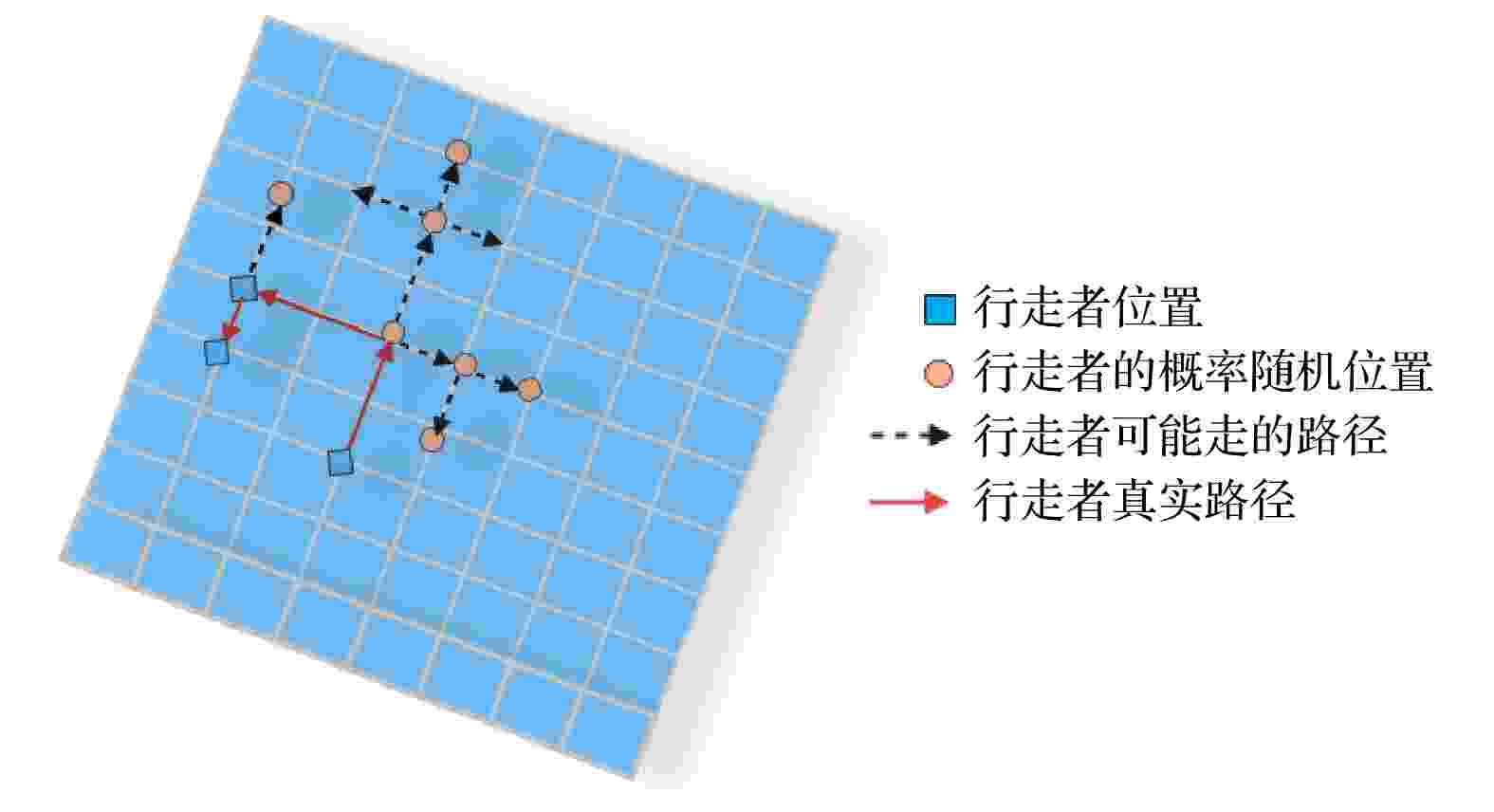
Three dimensional image encryption algorithm based on quantum random walk and multidimensional chaos
2022, 71 (17): 170303.
doi: 10.7498/aps.71.20220466
Abstract +
With the development of computer network technology, people’s requirements for information security is increasing day by day. However, the classical encryption technology has the defects of small key space and easy crack. The problems of image encryption technology in protecting image information security and private content need solving urgently. As a new type of quantum key generator, quantum random walk has a large key space. Compared with the classical random walk, the computing speed and security are significantly improved. This paper presents a three-dimensional image encryption algorithm that is based on quantum random walk and involves Lorenz and Rossler multidimensional chaos. Firstly, Gaussian pyramid is used to segment the image. Secondly, the Hamming distances of several sub images are calculated by using the random sequence generated by quantum random walk and the random sequence generated by Lorenz chaotic system in multi-dimensional chaos, and then synthesized, and the Euclidean distances between the three RGB channels of the image are calculated. Finally, the sequence value obtained from the remainder of Hamming distance and Euclidean distance, as an initial value is input into the Rossler system in multi-dimensional chaos to generate a random sequence which is used as the key to XOR the RGB channel of the image so as to create an encrypted image. The corresponding decryption scheme is the inverse process of the encryption process. In addition, in terms of transmission security, this paper uses a blind watermark embedding algorithm based on DCT and SVD to embed the watermark information into the encrypted image, so that the receiver can extract the watermark and judge whether the image is damaged by the attack in the transmission process according to the integrity of the watermark information. If it is not attacked maliciously, the image will be decrypted. This operation further improves the protection of image information security.The experimental results show that the peak signal-to-noise ratio of the encrypted image is stable between 7 and 9 and the encryption effect is good, the GVD score is close to 1, the correlation of the encrypted image is uniformly distributed, and the correlation coefficient is close to 0, and the key space is 2128 in size and the encrypted histogram is evenly distributed, showing a high ability to resist statistical analysis attacks.
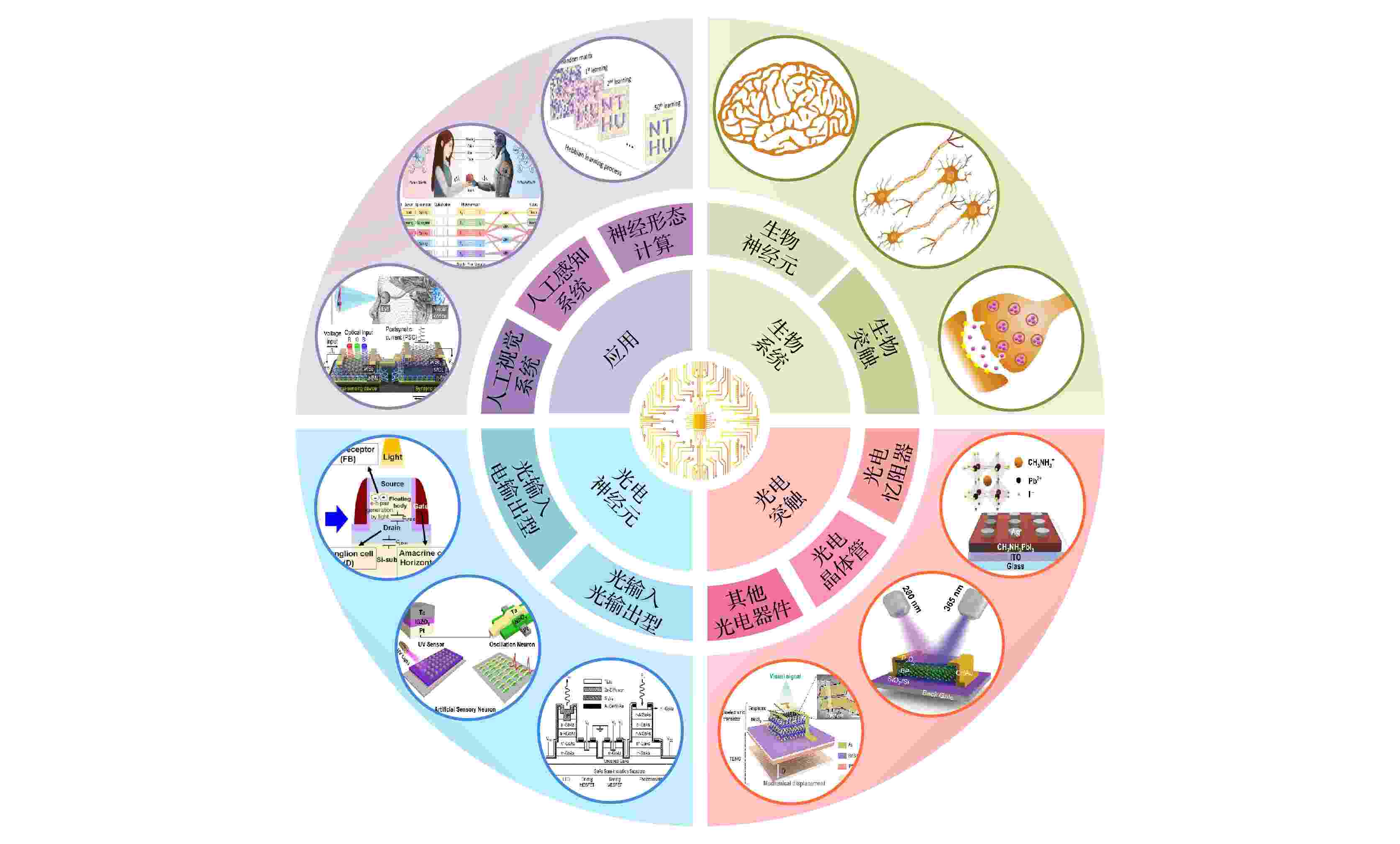
2022, 71 (14): 148505.
doi: 10.7498/aps.71.20220111
Abstract +
Conventional computers based on the von Neumann architecture are inefficient in parallel computing and self-adaptive learning, and therefore cannot meet the rapid development of information technology that needs efficient and high-speed computing. Owing to the unique advantages such as high parallelism and ultralow power consumption, bioinspired neuromorphic computing can have the capability of breaking through the bottlenecks of conventional computers and is now considered as an ideal option to realize the next-generation artificial intelligence. As the hardware carriers that allow the implementing of neuromorphic computing, neuromorphic devices are very critical in building neuromorphic chips. Meanwhile, the development of human visual systems and optogenetics also provides a new insight into how to study neuromorphic devices. The emerging optoelectronic neuromorphic devices feature the unique advantages of photonics and electronics, showing great potential in the neuromorphic computing field and attracting more and more attention of the scientists. In view of these, the main purpose of this review is to disclose the recent research advances in optoelectronic neuromorphic devices and the prospects of their practical applications. We first review the artificial optoelectronic synapses and neurons, including device structural features, working mechanisms, and neuromorphic simulation functions. Then, we introduce the applications of optoelectronic neuromorphic devices particularly suitable for the fields including artificial vision systems, artificial perception systems, and neuromorphic computing. Finally, we summarize the challenges to the optoelectronic neuromorphic devices, which we are facing now, and present some perspectives about their development directions in the future.
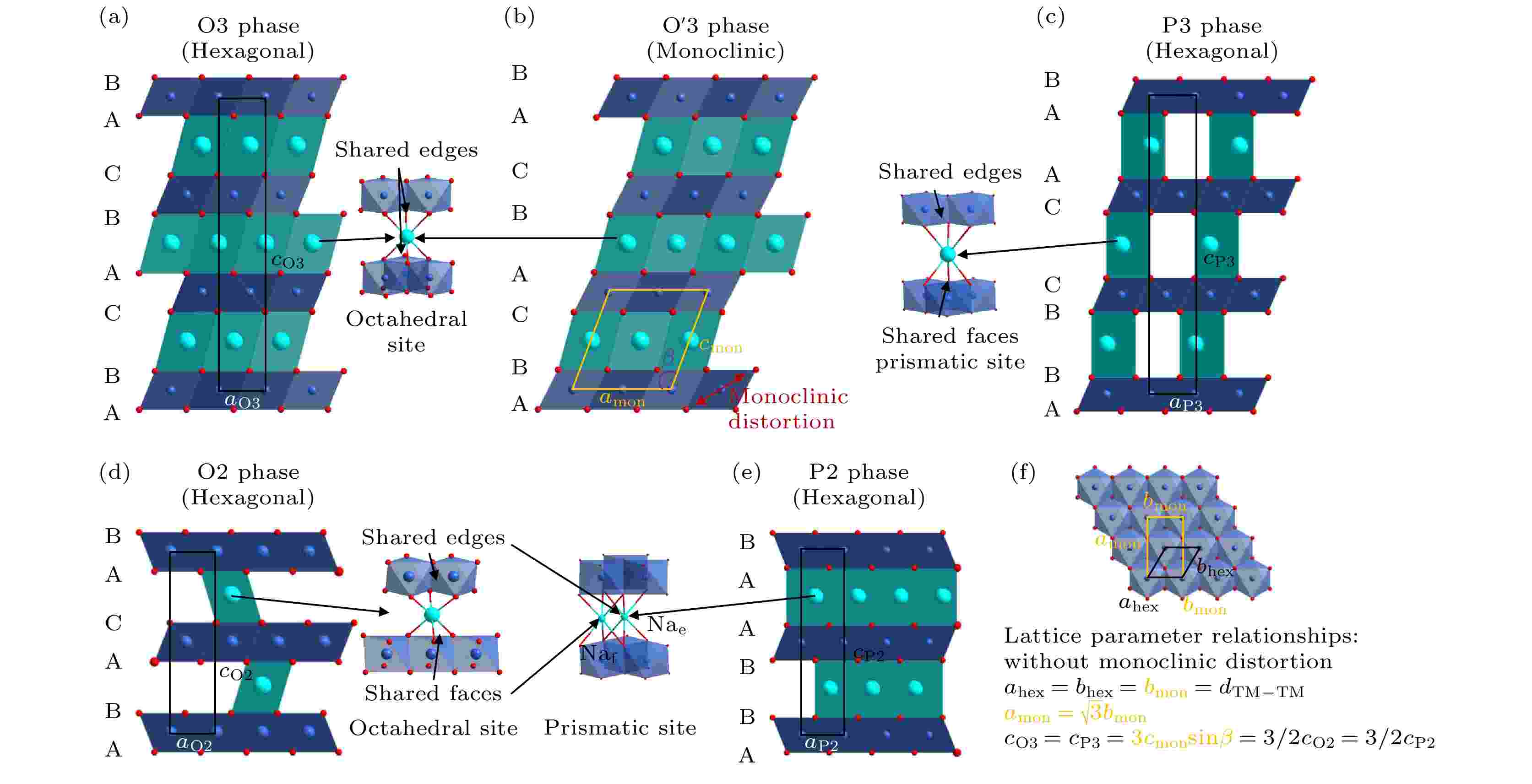
2022, 71 (10): 108801.
doi: 10.7498/aps.71.20220291
Abstract +
Na-ion batteries possess great potential applications in the large-scale energy storage. The Na-ion layered oxide cathode (NaxTMO2) has received increasing attention in scientific and industrial research due to its high capacity, easy manufacture, adjustable voltage, and low cost. However, the larger the Na+ radius and the stronger the Na+-Na+ electrostatic repulsion is, which will lead to various structural configurations and complex structural transitions, resulting in multiple structure-property connections. In this paper, the structural types of Na-ion layered transition metal oxide cathode materials are introduced, and their structural evolutions during Na+ de/intercalation are summarized for revealing the mechanism for structural transformation of Na-ion layered transition-metal oxide cathode material and its effect on electrochemical performance; the existing challenges are discussed; the improvement strategies are proposed finally.

2022, 71 (3): 030501.
doi: 10.7498/aps.71.20211549
Abstract +
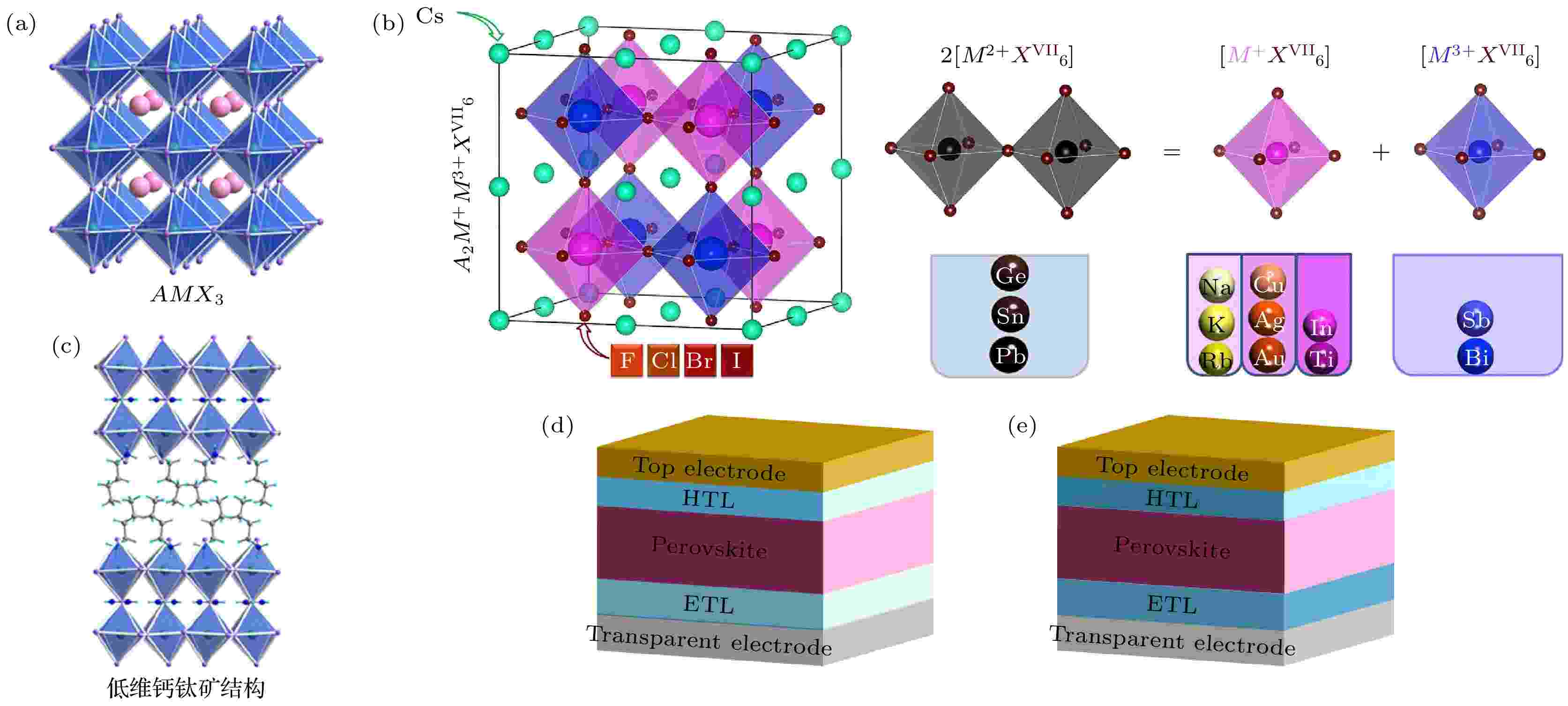
2022, 71 (16): 166801.
doi: 10.7498/aps.71.20220359
Abstract +
Research on perovskite solar cells is prevalent because of their excellent photovoltaic performance. Most of the perovskite films are prepared by polycrystalline perovskite films and low-temperature solution method, thus inevitably creating a high density of defects, including point defects and extended defects. These defects can also be divided into two types: shallow-level defects and deep-level defects. The multiple types of defects are the main cause of nonradiative recombination, which will limit the enhancement of photovoltaic properties and stability of solar cell devices. In this paper, we review the latest advances in defect passivation and describe in detail the mechanisms of different methods to passivate defects at the surface and interface of perovskite films to reduce nonradiative recombination. We also summarize the research results about the defect passivation to reduce the deep energy level traps by Lewis acid and base, anion and cation, and the results about the conversion of defects into wide band gap materials as well. The effects of various strategies to modulate the mechanism of passivation of perovskite surface/interface defects are also elaborated. In addition, we discuss the intrinsic link between crystal defects and device stability, and provide an outlook on the feasibility of defect passivation strategies in future research.

2022, 71 (2): 023601.
doi: 10.7498/aps.71.20211876
Abstract +
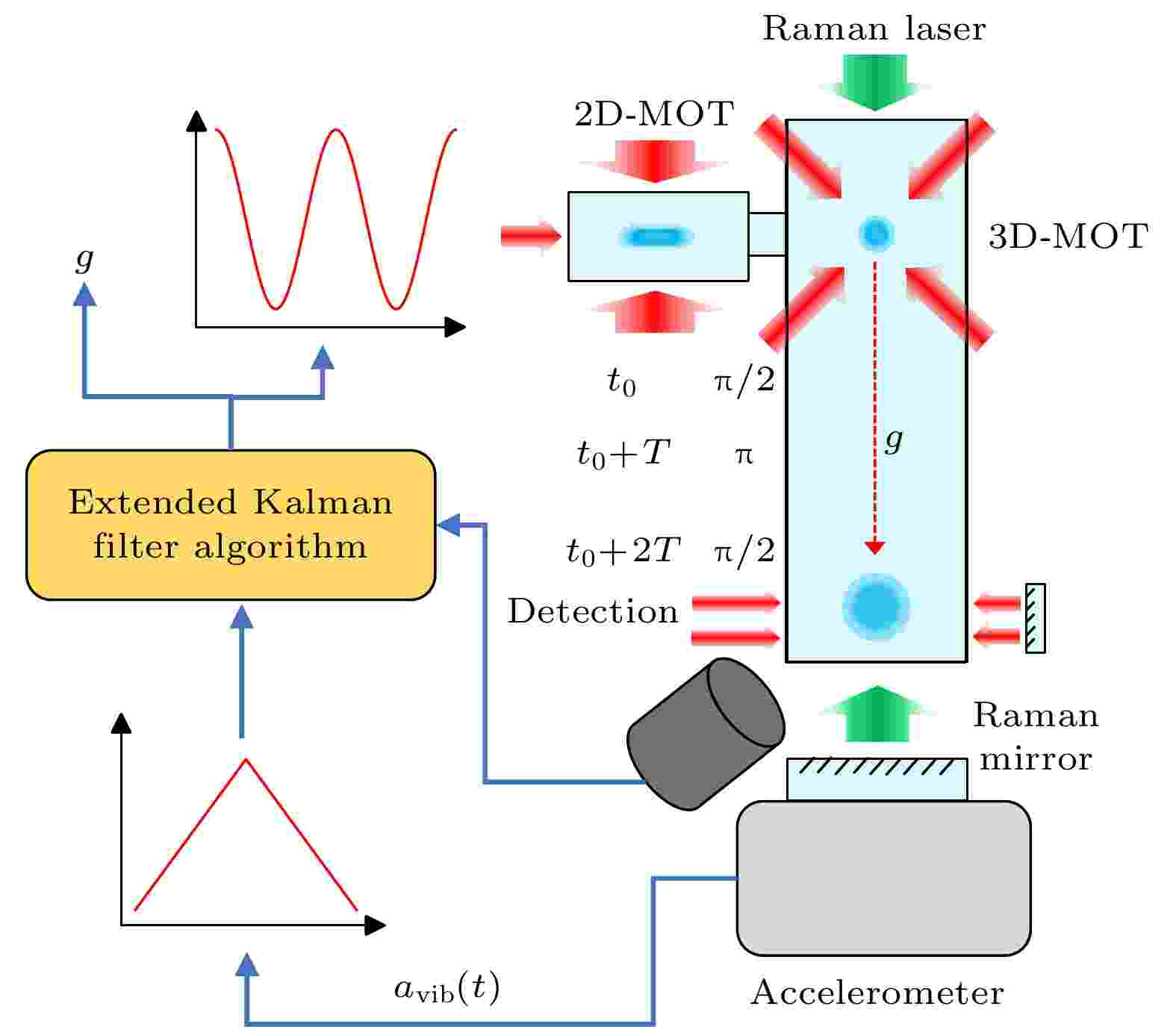
2022, 71 (13): 133702.
doi: 10.7498/aps.71.20220071
Abstract +
The precision dynamic measurement of absolute gravity based on the cold atom interferometer can provide a new method for marine gravimetry, so that it has attracted more attention. Based on the homemade shipborne cold atom interferometric absolute gravity measurement system, we carry out a series of measurement experiments in a certain area of the South China Sea. Under dynamic conditions, the suppression of measurement noise is essential for the improvement of the measurement performance. According to the physical model of the measurement system, in this paper a data processing method is proposed based on the extended Kalman filter algorithm for the absolute gravity dynamic measurement. The observed atomic interference fringe data are filtered in the time domain to estimate the absolute gravity value. Based on this processing method, the sensitivity of absolute gravity measurement under the condition of ship speed less than 2.1 km/h is improved from 300.2 mGal/Hz1/2 to 136.8 mGal/Hz1/2 (T = 4 ms). Comparing the processed data with the data calculated from the earth gravity model (XGM2019), it is found that both of the data are in good agreement. These results confirm the effectiveness of the data processing method proposed in this paper, and provide a new processing method of suppressing the measurement noise of shipborne cold atom interferometric absolute gravity measurement system.

2022, 71 (6): 064201.
doi: 10.7498/aps.71.20211582
Abstract +
Muon radiography is a nondestructive imaging technology based on the naturally existing cosmic ray muons. Because cosmic ray muons have the strong ability to penetrate, muon radiography in which the absorption of muons through matter is utilized, is especially suitable for the imaging of large-scale objects. While the traditional geophysical technologies used in archeology have some limitations, muon radiography is expected to become a powerful supplement in the nondestructive detection of large-scale cultural relics. Based on Monte Carlo simulation method Geant4, the muon radiography of the underground palace of Qinshihuang Mausoleum is studied in this work. A model of the underground palace of Qinshihuang Mausoleum is set up with GEANT4 program according to the data acquired by the previous archaeological study of Qinshihuang Mausoleum’s inner structure, as well as a reference model without these inner structure. By investigating the differences between the muon fluxes obtained from the two models, the muon radiography image of the inner structure of the model can be obtained. During the simulation, the cosmic ray muon source is generated by sampling according to an empirical formula summarized by Reyna, which can accurately describe the energy spectrum and angular distribution of cosmic ray muons at sea level. In addition, two viewpoints are selected in order to determine the three-dimensional position of the chamber. The simulation data are processed by using an image reconstruction algorithm which can be described as the following three steps. Firstly, the counts of muons in different directions are converted into muon flux. Secondly, the muon flux of the reference model is deducted from that of the Qinshihuang Mausoleum model, and the angular coordinates of the chamber walls are determined. Finally, combined with the wall’s angular coordinates obtained from the two viewpoints and the relative position between the two viewpoints, the chamber size and its position are reconstructed according to the geometric relationship. The errors of the reconstructed chamber center position and the length of chamber walls are both approximately 7%. In this article, we conduct only a preliminary study of muon radiography applied to the nondestructive detection of Qinshihuang Mausoleum, but the results show that muon radiography can be a promising tool for the archeological study of Qinshihuang Mausoleum. In the follow-up study, more factors will be taken into consideration, including the details of Qinshihuang Mausoleum model, and the improvement of image reconstruction algorithm.

2022, 71 (15): 154204.
doi: 10.7498/aps.71.20220503
Abstract +
With the continuous development of mobile internet, cloud computing, Internet of things, and 5G, the annual growth rate of the existing communication transmission capacity is far from meeting the growing demand. The gain bandwidth of L-band erbium-doped fiber amplification (EDFA) has become the main factor for limiting the bandwidth extension. Owing to its negative effect on the gain and noise figure after 1580 nm, the excited state absorption (ESA) is regarded as a key factor that directly limits the L-band expansion of EDFA. If the ESA coefficient has the same value as the stimulated emission coefficient, the net gain coefficient becomes zero. At the same time, signal amplification cannot be obtained no matter how the pump power and fiber length are adjusted. Improvements from the perspective of erbium-doped fibers, such as changing the host glass and doping components, are extremely beneficial to L-band extension based on simple amplifier configurations. In the present study, an erbium-doped fiber extended to the L-band is fabricated by the modified chemical vapor deposition technology. The saturation curve of the fiber is measured, and then the rate of clustering is obtained. In addition, the absorption coefficient and emission coefficient of the fiber are tested by the truncation method, then the effect of ESA is studied. We demonstrate that modulating the ratio of P to Al in the fiber core has a significant inhibitory effect on the ESA of Er3+. To better characterize the amplification performance of the fiber, a single-stage and a multi-stage amplifier system are built respectively. At an input signal injection with a power value of –9 dBm, the fiber exhibits a gain of 10.5 dB with a maximum noise figure of 5.9 dB at 1625.3 nm, based on a single-stage amplifier system under a 980 nm forward-pumping excitation. It indicates that the amplification performance of the fiber in the long-wavelength has improved, which is consistent with the conclusion of the suppression effect on the ESA. By optimizing the fiber length for the first, second and third stage to 19 m, 26 m and 10 m, respectively, a gain of 23.4 dB is obtained at the longest wavelength. The maximum noise figure is 6.3 dB, and the saturation output power is 24.8 dBm. In the meantime, the pump conversion efficiency arrives at 13%. This is the first report on the L-band extended silicate-based erbium-doped fiber that can achieve long-wavelength gain extension to 1625.3 nm.

2022, 71 (9): 093201.
doi: 10.7498/aps.71.20212366
Abstract +
The minimum amount that can be detected and quantitatively analyzed by Fourier infrared spectrometer depends on the signal-to-noise ratio of the measured gas spectrum. In order to use Fourier transform infrared absorption spectroscopy to measure CO2, CO, CH4, N2O and other greenhouse gases, the signal-to-noise ratio and instrument detection limit of the mixed gas are studied. We propose a method to calculate the gas detection limit of the instrument through the HITRAN simulation spectrum. In addition, we build an experimental platform to verify the accuracy of the detection limit approximation based on the HITRAN simulation spectrum calculation, which serves as the actual measurement detection limit of the instrument, and we also analyze the reasons why there appears the error between the existing experimental platform and optimization scheme and their deficiencies as well.

- 1
- 2
- 3
- 4
- 5
- ...
- 41
- 42










